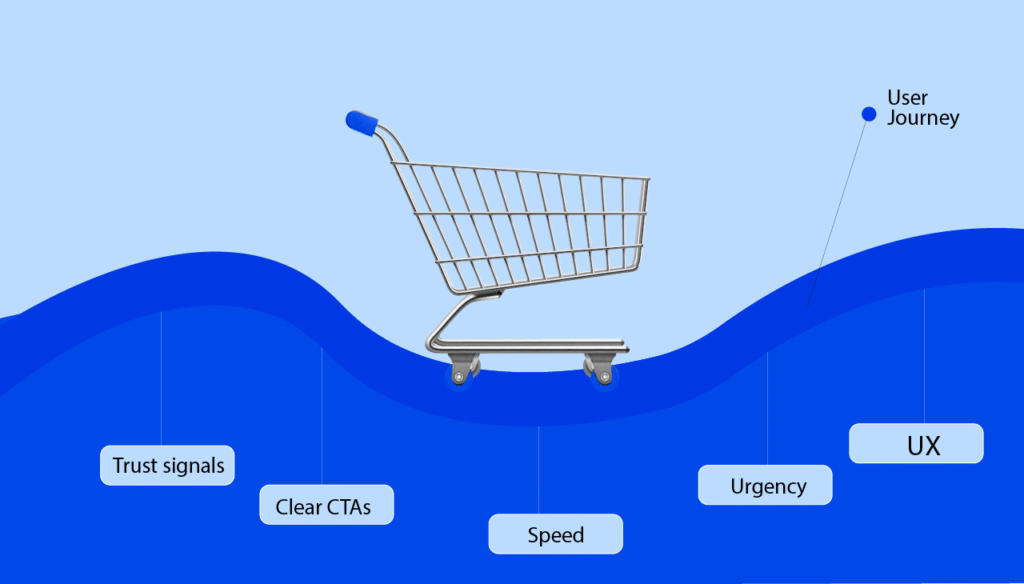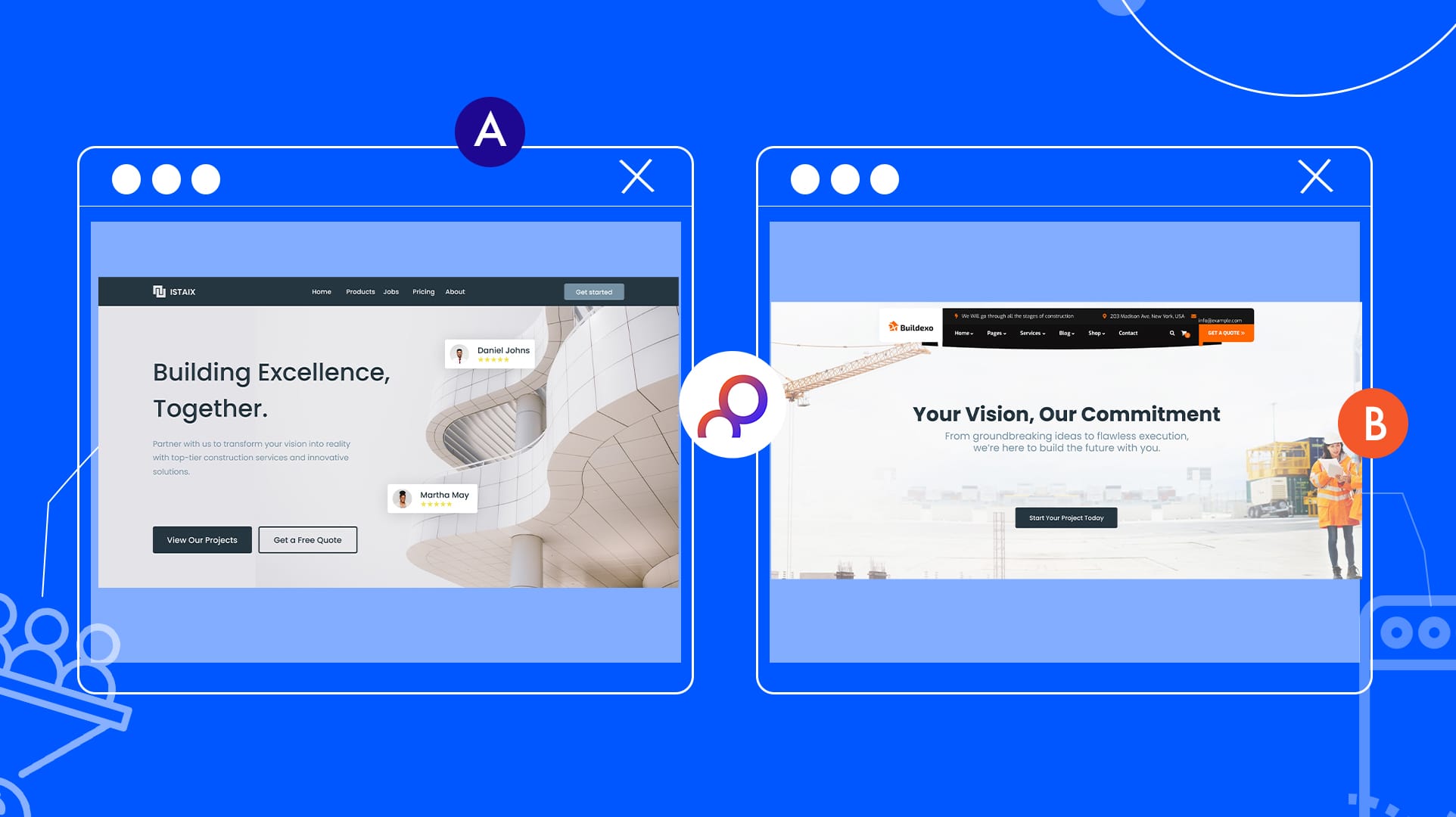In today’s digital marketplace, traffic is cheap, until it isn’t. Brands spend heavily on ads, social campaigns, and influencer collaborations to get eyeballs, yet many still struggle to convert those hard-won visitors into actual paying customers. It’s the modern paradox: high visibility, low conversions. And in a landscape where margins are tightening and competition multiplies by the hour, Conversion Rate Optimization (CRO) has quietly evolved from a tactical afterthought into a strategic imperative.
If your e-commerce enterprise isn’t obsessively optimizing every touchpoint between interest and transaction, you’re bleeding revenue.
Let’s get grounded in the fundamentals before we dive into the practical playbook.
What Is an e-commerce enterprise?
An e-commerce enterprise is more than just an online store. It’s a digitally powered business model designed to facilitate the end-to-end buying process, product discovery, evaluation, purchase, and often post-sale engagement, via the internet. Whether it’s a multi-brand marketplace or a direct-to-consumer brand with a tightly controlled product line, the e-commerce enterprise operates on the foundational premise of scale, convenience, and 24/7 availability. It hinges on two pillars: seamless digital infrastructure and frictionless user experience.
What Is a digital enterprise?
A digital enterprise is broader. It encompasses any organization that leverages digital technologies to deliver value, either through products, services, or operations. It’s about transformation at scale: cloud-native systems, data-driven decision-making, omnichannel user engagement, and increasingly, the integration of artificial intelligence to refine processes. Where an e-commerce enterprise sells through digital, a digital enterprise is digital in its DNA.
What Is CRO (Conversion Rate Optimization)?
CRO, or Conversion Rate Optimization, is the discipline of systematically improving the percentage of users who take a desired action, most commonly, completing a purchase. It’s not guesswork or design fluff. It’s a data-centric process rooted in behavioral analysis, A/B testing, UX design, persuasive copywriting, and funnel diagnostics. At its core, CRO asks a brutally simple question: What’s stopping people from buying, and how do we fix it fast?
Where e-commerce and CRO Intersect
E-commerce enterprises don’t succeed on traffic alone; they thrive on efficient conversions. And this is where CRO steps in, not as a reactive patch, but as a proactive performance engine. CRO helps e-commerce businesses translate digital visibility into economic viability. By marrying the principles of user psychology, interface design, and performance analytics, CRO becomes the optimization layer of the e-commerce stack. It turns passive browsers into engaged buyers, reduces churn, and ultimately stretches every marketing dollar further. CRO is not just a metric, it’s a mindset. For the modern e-commerce enterprise, it’s the difference between running a store and running a business.
What are the checklists and tactics to keep you soaring?
Tactic 1: Optimize the first 8 seconds which is the conversion crucible
In 2015, Microsoft published a widely cited study, indicating that the average human attention span had dropped to just 8 seconds, shorter than that of a goldfish. Whether that’s still entirely accurate is debated, but what remains true is this: if your landing page doesn’t resonate in 8 seconds, you’ve lost them, that; you can bank on for sure.
And by “resonate,” we don’t mean pretty visuals, as many tend to think. We mean clarity, relevance, and perceived value.
Let’s consider the following case study
Amazon’s early growth can be attributed not just to its catalog depth, but to its obsession with load speed and relevance. In a 2006 internal study, Amazon discovered that every 100ms delay in load time resulted in a 1% drop in sales. That’s roughly $1.6 billion a year in lost revenue, just from speed. And guess what? That’s just one of many sample case studies that underscores the impact of speed in conversion optimization efforts.
This aligns with Fogg’s Behavior Model, which posits that behavior (B) happens when Motivation (M), Ability (A), and a Prompt (P) converge. If your site doesn’t motivate, isn’t frictionless, or lacks a clear prompt, all within seconds, you lose.
So here’s your speed Checklist:
- Does the landing page headline make a clear promise?
- Is the value proposition visible above the fold?
- Is the primary CTA unmistakable and compelling?
- Do the visuals support, not distract from, the message?
- Is page load time under 2.5 seconds?
If you ticked all the boxes above, then bravo. You are well on your way to a great start.
Tactic 2: audit the checkout flow to cut the cognitive overload
According to Baymard Institute, 70.19% of online carts are abandoned. But here’s the kicker: 17% of users abandon simply because the checkout process is “too long or complicated.”
In 2009, the outdoor gear retailer REI simplified their checkout process by removing unnecessary steps and made guest checkout default. The result? A 21.8% lift in conversions in just 3 months. This is where Hick’s Law comes into play: the more choices and steps you present, the longer it takes users to decide. More delay = more friction = more drop-offs. So, for the cognitive and stress free checklist, you might want to consider the following:
- Are form fields reduced to the essentials?
- Can users check out without creating an account?
- Is autofill and mobile-friendly input supported?
- Are progress indicators present in multi-step checkouts?
- Is the CTA button color optimized based on A/B testing?
If all these boxes are ticked, then bravo yet again.
Tactic 3: build psychological trust signals, understand your brand is only as credible as It feels
We don’t buy with our brains, we buy with our biases. For CEOs and seasoned business minds: consider this, trust is not built at scale by logic, but by engineered familiarity.
Zappos famously offered 365-day return policies and free shipping both ways. This decision cost them millions upfront, but over time, skyrocketed customer lifetime value (CLV) and earned them a cult following. Cialdini’s 6 Principles of Persuasion come alive here, specifically authority, social proof, and reciprocity. The more your page reflects these signals (reviews, guarantees, badges, expert backing), the faster the mental resistance falls. To build a brand everyone can trust, consider the following checklist:
- Are trust badges (SSL, verified payment) clearly displayed?
- Are product reviews and testimonials authentic and visible?
- Do you include clear return/refund policies?
- Is customer support contact easy to find and use?
- Are real-time purchase or review notifications enabled?
You know you’re a trusted and reliable brand when all the boxes above are ticked.
Tactic 4: Personalize the experience with first-party data, adopt a relevance-first approach
In the post-cookie era, the brands that win are those who can leverage first-party data to deliver hyper-personalized experiences. Shopify’s own data shows that personalized product recommendations can boost conversion rates by up to 30%.
Sephora built a recommendation engine based on browsing history, past purchases, and beauty profiles. Customers are more likely to discover products they didn’t know they wanted, and that’s the holy grail of e-commerce. The Paradox of Choice warns that overwhelming consumers with too many options can reduce sales. But smart personalization narrows the field, not based on guesswork, but on data. Here are the checklists for a personalized branded approach;
- Are product recommendations tailored based on user behavior?
- Is dynamic content used in email, homepage, and cart pages?
- Are upsells and cross-sells backed by behavioral insights?
- Are you segmenting based on purchase history and engagement?
- Is your CRM integrated with your web analytics?
If al these are ticked, then great job.
Tactic 5: Use scarcity and urgency ethically, but effectively
Scarcity and urgency tap into our loss aversion bias, A well-documented psychological phenomenon that people fear missing out more than they desire gaining.
Booking.com’s “Only 1 room left at this price!” and Amazon’s “Order within 3 hours to get it tomorrow” are CRO gold standards. These aren’t gimmicks, they’re strategic CRO devices that create tension. Loss aversion is a key principle in Prospect Theory (Kahneman & Tversky, 1979). It states that people will go to greater lengths to avoid loss than to achieve gain. CRO experts bake this into design flows, copy, and micro interactions.
The art and science of ecommerce CRO conversion.
Most importantly, Conversion Rate Optimization isn’t just a checkbox. It’s an evolving discipline at the intersection of behavioral psychology, digital architecture, and market dynamics. Whether you’re a rising e-commerce founder, a growth manager aiming for your next million-dollar quarter, or a seasoned CEO defending your market position, one truth remains: you’re not selling products, you’re orchestrating decisions. Understanding why users convert is infinitely more valuable than tracking if they do. And the centrality of that understanding lies a deep understanding of user friction, cognitive load, psychological triggers, and value delivery.



